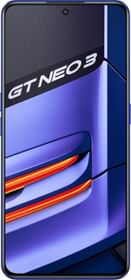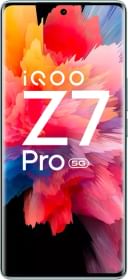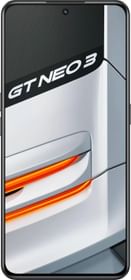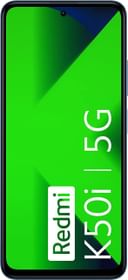Since your smartphone display is a window through which you can peep across the globe, blessed by the World Wide Web, it is imperative that you make an informed choice and get the best-suited one. If you aren’t used to testing and living with different kinds of displays, and aren’t familiar with what parameters to judge a display on, you might not be able to spot if something is off at first glance. Irrespective of what category of users you belong too (basic, moderate, advanced) your smartphone display will have a major impact on overall usage experience. Here is what you should be looking out for.
Also Read: ‘RAM’sutra – Everything You Need To Know About RAM On Your Phone
Display Resolution and PPI
As tempting as it is to judge a display by its resolution, it isn’t a very accurate yardstick to rely upon. Instinctively placing a Full HD panel over HD display, or a Quad HD display over a Full HD one is a rookie mistake.
Higher resolution undoubtedly makes your display sharper but since there are so many variables involved, at times, a higher resolution display might feel bland as compared to lower resolution panel.
The difference between Full HD and HD displays is easily noticeable, but as you move up the chain, resolution differences become less pronounced. We have had plenty of experience between full HD and QHD display panels and can’t yet discern one from another. The full HD panel on Nexus 5X, for instance, feels perfectly adequate.
Also Read: Specification wars have ultimately rendered spec-sheets meaningless
PPI or pixels-per-inches or pixel density is a further elaboration of screen resolution. The number denotes how densely the display is packed with pixels or, to be more precise, the number of pixels across the display diagonal. So naturally a 5-inch display with full HD resolution will have higher PPI as compared to a 5.5 Inch display with the same resolution.
Nowadays, you can score an HD display for as low as 5000 INR. Since you obviously prioritize your display (or you won’t be enduring this write-up), 720p HD should be your minimum threshold. In today’s market, that’s readily available across all price ranges.
QHD is a norm for flagships and 4K displays are also emerging, but the only meaningful advantage comes into play when you view them in a VR headset like Google cardboard. With ultra-high resolution displays, VR experience is more meaningful.
Display Types
Now this is a much more significant factor worthy of your attention. While looking for display types, you will come across numerous marketing terms like SLCD, AMOLED, IPS, POLED, Retina, Quantum LCD, and more.
All high-end displays are pretty cool, irrespective of the technology being used. For affordable and mid-range price segments, you should know the difference between AMOLED and IPS LCD displays.
Also Read: 5 Google Chrome Tips and Tricks For Unmatched Browsing Experience On Android
AMOLED: The AMOLED (Active Matrix Organic Light Emitting Diode) displays are the ones where each pixel is powered separately. In the normal state, all pixels are off. To denote black color, the pixel is completely off. This results in awesome black and deep contrast radio for AMOLED panel. Colors ‘pop’ or are a bit oversaturated. Many people like oversaturated displays, while others discard them as unreal. For watching videos and multimedia content, AMOLED panels are very well suited, but for reading, they are not.
Whites in AMOLED are often tinged with blue or appear pale in comparison with IPS LCD panels. AMOLED technology has improved a lot since last few years and AMOLED panels today show wide viewing angles and good sunlight visibility. Besides, the absence of backlight results in less power consumption and the display being thinner (That is precisely why you see AMOLED displays in all ultra slim phones).
Samsung is the veritable market leader in smartphone AMOLED display technology (Samsung calls them Super AMOLED) and LG is aggressively pursuing OLED TVs.
Also, if you are going for an AMOLED screen, most of them use a pentile RGBG pixel arrangement, where each pixel is made of RG or RB (not RBG), and thus you don’t get full resolution for Blue and Red parts. What essentially means is that the difference between a full HD and QHD display will be more discernible if you are comparing AMOLED screens.
IPS LCD: The IPS (In-Plane Switching) LCD displays are characterized by wide viewing angles and better whites. Apple’s Retina display, SLCDs, Quantum LCDs are all variants of IPS LCD technology. These displays are better suited for those who often read on their phones. But there is a caveat involved. You can find IPS LCD displays ranging from pure crap to stunningly gorgeous ones.
You can find IPS LCD displays ranging from pure crap to stunningly gorgeous ones. And the cheap ones with cold color tones are excessively harsh on your eyes. Which, in turn, renders them unfit for long and night time reading.
Display Quality – Sunlight visibility, viewing angles and colors
You can broadly classify them on basis of display types, but all displays categorized within the same display type aren’t equal. That brings us to display quality.
To quantify display quality is very difficult and thus most reviewers give their subjective analysis. OEMs take advantage of this shortcoming and palm off poorly calibrated panels while making a big noise about wide color gamut, PPI and resolution.
The quality of a display panel is measured by how accurately it renders colors. Wide color gamuts don’t necessarily help and what color temperatures you like is again a matter of personal taste. A properly calibrated display is instantly mesmerizing, while an improperly calibrated display appears washed out.
The most important thing to be aware of here is color temperature. Over the years OEMs have habituated us to cold, blue color displays and thus a proper sRGB calibrated panel might feel Yellowish to us. If you still give it a chance and live with it for a day or two, you will find it impossible to return back to cold blue ones.
It always helps if the software lets you efficiently tweak color temperature. Most custom UIs that we come across make provision for tweaking this aspect, but very few implementations are actually useful.

Even though we don’t spend most of our day under harsh direct sunlight, poor sunlight visit can be a major dampener at times. For instance, if you are on a trip visiting a picturesque monument, having to cup your hands for basic legibility can be a huge pain.
Also Read: 5 Next To Useless Android Features
The bottom line is, for display quality, you will have to rely on other reviewer’s opinion or judge it yourself in person. However, while considering someone else’s opinion or while examining a display yourself, you should know exactly what you are looking for to make the correct choice.
Touch Glass And Scratch Resistance
An unwieldy resistance between the touch panel and your fingers can be a mood killer, but most manufacturers get this right. Let’s talk about some common terms associated with display touch glass.
Oleophobic coating: The Oleophobic coating makes your touch glass resistant to finger smudges (to an extent that is). Yes, Oleophobic coating makes a difference, but only when you are using your phone without a scratch-guard or tempered glass protection. This is still something missing on most budget Android handsets. Also, if you are buying a tempered glass, look for one with oleophobic coating.
2.5D Glass: The 2.5D Glass is more of an aesthetic thing. A 2.5D Glass gently curves at the edges and allows for the smooth merger of display and side frame. Yup, it’s a subtle thing that goes a long way.
Scratch Resistance glass: Consumers in India have a deep-rooted liking for Gorilla Glass. If not that, alternatives like Ashai DragonTrail glass are almost mandatory. Perhaps this liking stems from a desire to have a scratch-free display, which these coatings are not. (same as water resistant isn’t waterproof, you can and will accumulate fair amount of day to day scratches if you go commando).
If you plan on using a case or tempered glass, which you should, a scratch-resistant coating becomes secondary on a phone. But if you plan on using simple flip-covers only, scratch resistant glass is an added bonus.
3D Touch: This is a new technology, popularized with the new iPhones. Also, this could potentially be a mainstream Android feature by next year. 3D Touch makes your display pressure sensitive and thus adds another layer of interaction with the touch panel. This sounds cool but without proper software trickery, this won’t make a great deal of difference.
Screen to body ratio: Screen to body ratio tells you how thin bezels around your display are. Anything close to 70 percent is cool.
Bottomline:
As important a display is, without first class hands-on experience with different types of displays, you won’t know what you are looking for. Now that you are familiar with all the terms and their significance, reach out and explore.







































